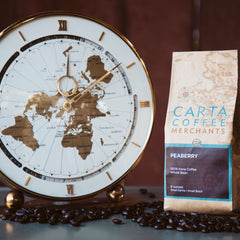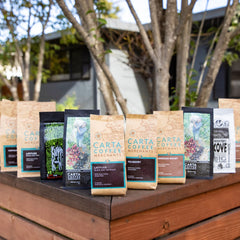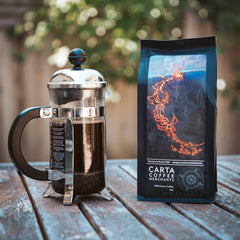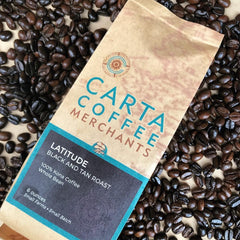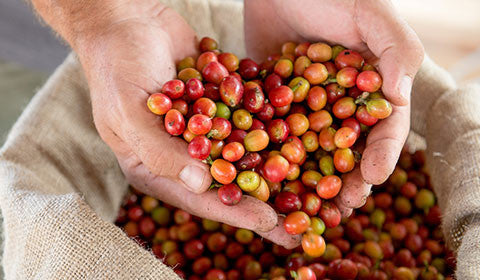Posted on

Have you ever given any thought to how the coffee you’re enjoying got from the coffee plantation to your cup? The entire process is a carefully choreographed dance of science, art, and heavy manual labor. The end result being that delicious cup of Kona coffee you’re enjoying while reading this article.
Let’s take a few minutes to learn how coffee goes from the fields of the rainforest to your coffee cup.
Growing Coffee
The coffee plant requires a tropical or subtropical climate to grow. Generally speaking, the coffee needs to be grown within 1,000 miles of the equator. Elevation doesn’t matter much as it can be grown at sea level, all the way up to 7,000 feet.
Coffee plants start their lives in nurseries where they are raised by experts in the growing process. There is a lot of science involved in the soil, the food, water, and amount of light each plant is given in the early stages of its life. Once the plant reaches 18 to 24 inches tall, they are transported to the coffee farm and planted 10 to 12 feet apart. By this point in time, the plant is roughly 1 year old.
Each coffee plant can grow to be 20 feet tall. This provides challenges when harvest time comes around, so when the plants reach 10 to 12 feet, they are pruned. After 4-5 years, the coffee plant starts to produce flowers that smell like jasmine. Flash forward 6-9 months and a small green cherry has appeared. Each cherry has 2 coffee seeds.
It is at this point in time that the coffee starts to ripen. The cherries change in color from green to yellow, then to a deep red. The cherries are now ripe for the picking. Inside the cherry is the coffee bean itself. The bean can be planted to grow more coffee plants, or it can be harvested and processed to produce a bean that will be used to make coffee.
Harvesting
Coffee harvesting is a manual labor-intensive product. There are no machines that harvest the coffee beans from the trees. The process is entirely dependent upon human labor. The farmers, their families, and even a few workers will carry a large basket and harvest each bean by hand. Most coffee is grown on five to seven acres of land throughout the world. Any larger and it would require an entire army of workers to pick the beans.
At Carta Coffee, our Kona coffee is harvested many times and it’s the multiple harvest and bean selection that makes our coffee stand out amongst the competition.
Natural harvesting is one of the most labor-intensive parts of the coffee growing process.
In some communities like Brazil, coffee farmers help each other out via a rotational type of harvest. All of the farmers gather to help out a neighbor harvest their coffee beans. Then when that job is done, they move to another farmer. This way the farming community takes care of itself.
Coffee grown in lower altitudes and in warmer climates tend to ripen before coffee grown in higher/colder altitudes and climates. The flavor of the coffee is also highly dependent on when it is harvested. For example, at the very beginning of the harvest, the coffee is said to be undeveloped in flavor. Towards the middle of the harvest is when the bulk of the crop is brought it. The flavors from the middle of the harvest have been described as mature and developed.
Premium coffee, such as Kona coffee, is made from beans that are gathered during the middle of the harvest. The beans are specially selected to provide the best flavor and aroma possible.
Processing
After the cherries are hand-picked, they must be depulped in 24 hours or less. If more than 24 hours goes by before they depulp, they might produce a rotten type of flavor that could ruin the coffee completely. This is why many high-end coffee growers have small batches. Much easier to manage and exert stringent quality control standards over.
The coffee is often depulped using a machine turned by a hand crank. It separates the bean from the cherry. Other coffee farmers use an electric machine to depulp their cherries. The seeds are separated for the next process and the pulp is moved to a container where it usually becomes compost for next seasons crops.
Fermenting
At this point in time, the coffee beans are moved into large tanks that are made from wood, plastic or cement. They are left to ferment for a few hours to a few days. The actual amount of time is a carefully guarded secret for most coffee farmers. After the beans have fermented for a set period of time, they are removed from the fermentation vat and then washed.
Drying
The beans must be washed and dried now in order to halt the fermentation process. After the beans have gone through the washing process, they are dried via machine or natural sunlight. If the farmer uses natural sunlight, the beans must be “turned” a few times every day and the farmer must make sure that they don’t come in contact with any water afterwards. It can take anywhere from 3 days to two weeks to dry the beans.
At Carta Coffee, the fresh cherry is placed on the drying area for approximately 4 weeks and is hand-raked and turned many times a day.
The cherry then dries like a raisin. The end result of this labor-intensive process leads to a very smooth and very complex cup of premium coffee.
Sorting
Next up is the sorting process. There are two main methods that farmers use for sorting: by hand and by machine. If by machine, a conveyor belt moves the beans under a camera which has been programmed to look for defective beans. A small burst of air will blow the defective bean off the conveyor belt. If the beans are sorted by hand, then a group of workers will sit down at the conveyor belt and visually inspect and remove any defective beans that pass by. This can add to the final cost of the coffee, but will provide many jobs to the women in the community.
Roasting the Coffee Beans
This is where the coffee comes into itself. The roasting aspect is equal parts art and science. Each coffee roaster will have his/her own preferred method – usually honed over decades of experience roasting beans.
Roasting is where the flavors of the coffee can be brought out. From acidity to citric flavor, to adding various natural notes such as chocolate or vanilla. The overall roast process can be extremely challenging, but very rewarding.
Most farmers use a tool called an “Agtron roast analyzer”. It can accurately test the classification of the roast from a scientific perspective. The point system it uses goes from 0.0 points (the darkest) to 100 points (the lightest). The overall goal of the roast is to fully bring out the flavors of the bean.
Quality Control
Most farms use a laboratory on premises to ensure good quality control. They take samples of the beans, the roast and the final coffee product itself and examine the flavor, the color, the small, density, imperfections and so on and so forth. The end goal is to reject poor batches of coffee and keep only the best to sell on the market.

